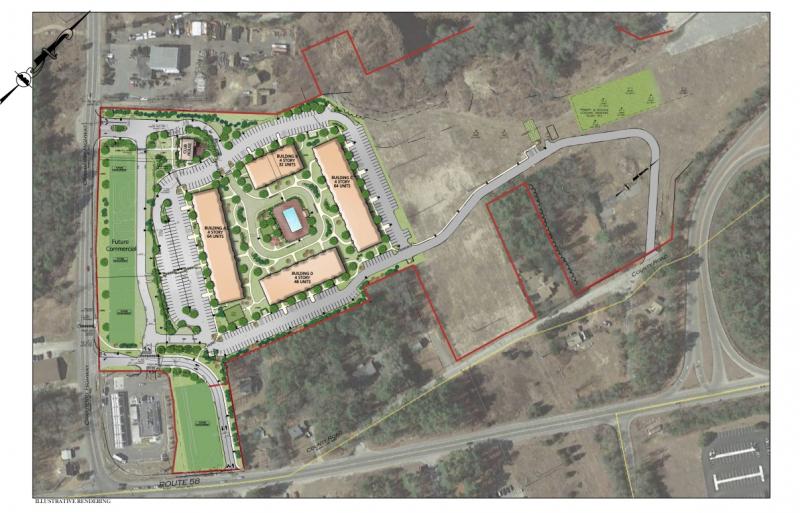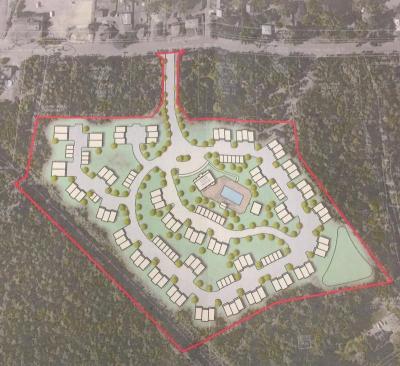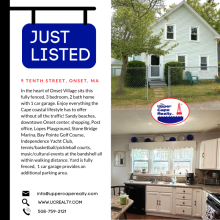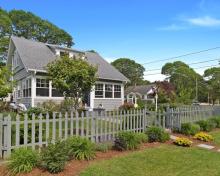Two towns near affordable housing threshold
It’s been a long time coming, but Marion and Rochester are on their way to satisfying the state’s “40B” requirement that at least 10% of housing in town be deemed affordable.
In addition to aiding the area’s less wealthy residents, meeting that 10% threshold would allow both towns to shut the door on developers who are now allowed to skirt zoning and conservation regulations to build housing that is at least 20-25% affordable.
At present, 0.4% of Rochester housing is deemed affordable. The Rochester Crossroads apartments, with site preparation work expected to begin this fall, would bring the town up and over the 10% threshold. Marion, with a current number of 8% would see that jump over the threshold if the Heron Cove project, proposed for construction off Route 6 near the Wareham line, is permitted and built.
Mattapoisett, with 2.6% affordable housing, has no new affordable housing in the pipeline.
The state law known as “40B” was enacted in 1969 to prod all Massachusetts communities to welcome new housing to serve those making less than 80% of an area’s median income. The penalty for those below that threshold is the loss of local control over developments that promise to increase the affordable housing stock.
Like most small towns in the state, Marion, Mattapoisett and Rochester have all been under the 10% threshold from the beginning.
For the Tri-Town, it is the broad Brockton metropolitan area that is used to calculate affordable housing standards.
Thus, 80% of the area median income for one person in Marion, Mattapoisett or Rochester is $55,950 a year, according to Department of Housing and Urban Development data. For a family of four, it’s $106,000.
Allowable sale prices and — more typically — rents are based on low and moderate income households spending no more than 30% of their income on housing.
At 30% of the income of a family of four making 80% of the area median, a three-bedroom apartment has to be rented at $2,077 per month or less to be considered affordable in the Tri-Town. For one person, it’s about $1,400 for a studio apartment.
“Basically, we need affordable housing,” Marion Affordable Housing Trust member Terri Santos said.
While currently having the least amount of affordable housing in the Tri-Town, Rochester is about to have the most.
The Rochester Crossroads project, developed by Steen Realty of Dartmouth, will be a 208-unit commercial and residential complex at the intersection of Route 58 and Cranberry Highway.
Slated to be built under the state’s “Chapter 40R” — a cousin of but different from 40B — Rochester Crossroads will combine 208 apartment units with some new commercial development. Under 40R, all 208 units will be able to count toward the town’s affordable housing stock, even though only 52 of them will be subject to affordability for those making less than 80% of the area median income.
Rochester Crossroads is already approved by the town, and a representative from Steen said it’s in the “advanced planning stages.” Preliminary site work is expected to begin in the fall.
In Marion, the affordable housing threshold would be reached by the proposed Heron Cove project, a 120-unit project on Route 6 near the Wareham Bridge also developed by Steen Realty. A quarter of those units are planned to rent at an affordable rate for those making 80% of the area median, which would bring the town above the 10% threshold.
Heron Cove, unlike Rochester Crossroads, is a 40B project. However, local officials call it a “friendly 40B” in which the developer works cooperatively with local officials in planning and executing projects. In addition, Heron Cove is a Local Initiative Program project with the state’s Local Initiative Program providing technical assistance to towns and developers working together to create affordable housing.
The completion of Rochester Crossroads and Heron Cove would leave Mattapoisett as the only holdout for affordable housing in the Tri-Town. And with no plans for affordable units on the horizon, it’s unclear when the town will cross the 10% threshold.
“The town doesn’t own any contiguous tracts of land that would be viable,” said Mattapoisett Select Board Member Jordan Collyer, adding that “to get to 10%, you need a lot of land.”
Collyer said that, as a result, the town would likely be dependent on a private developer deciding to build an affordable housing project in order to reach the threshold.
















